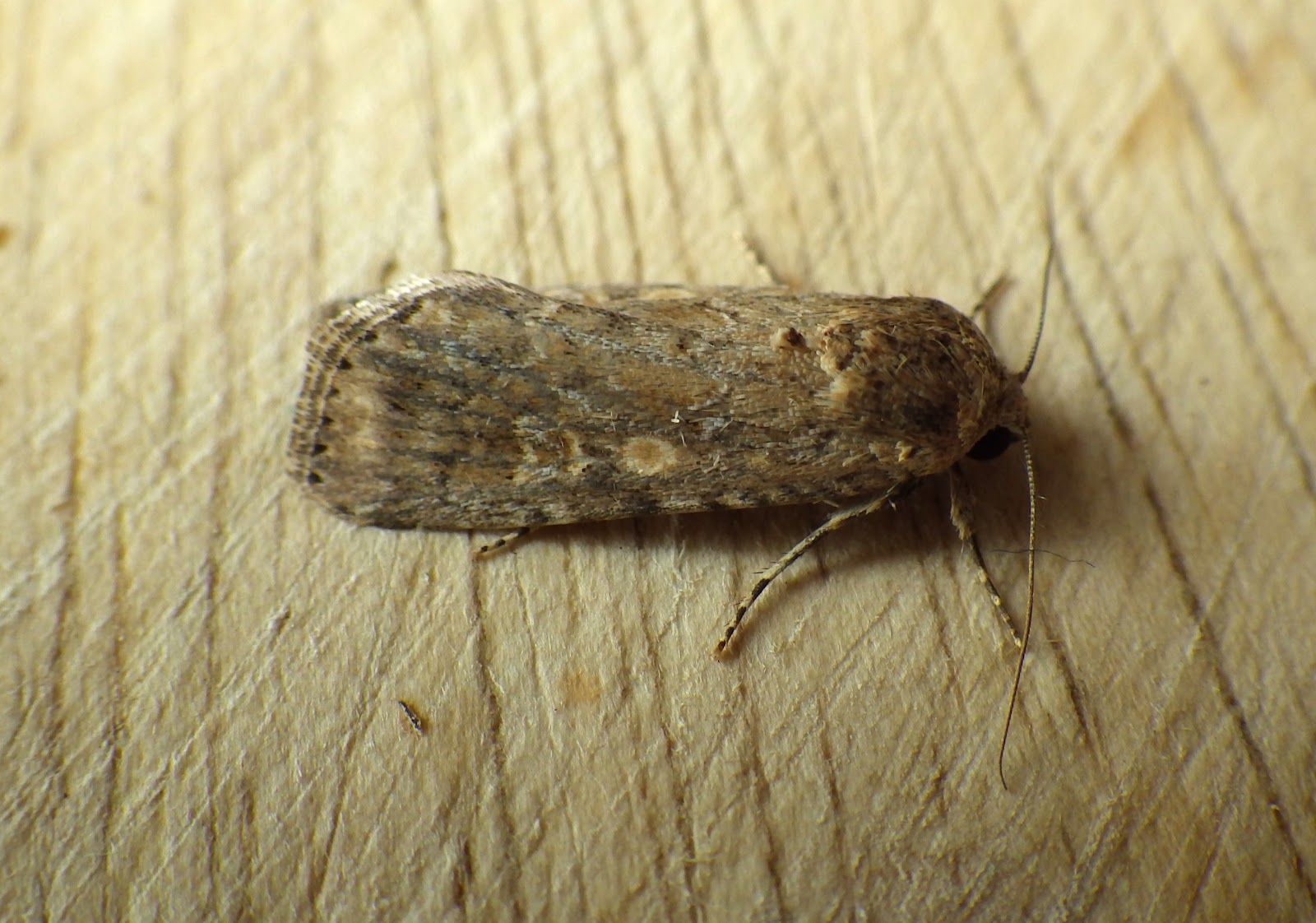I trapped for six consecutive nights over the last week (16/6 - 21/6 inclusive) and, consequently, had a backlog of moths to check (a very few remain). The trapping `frenzy` was in the hope of catching a migrant that would have been new to me, but only a couple of common species came my way - diamond-backed moth (x2) and a small mottled willow. In other words, none of the tempting, exotic-looking `goodies` that were turning up elsewhere in SW & S England (with a `sprinkling` in Wales and Eire).
Above: my small mottled willow (20/6). Above: beautiful snout - only recorded in my garden trap once or twice before. Above: diamond-backed moth - a common migrant.Above: my provisional thoughts here is that this is Apopmyelois bistriatella which feeds on Daldania fungus on burnt gorse etc. To be re-checked. Above: Anarsia spartiella - associated with gorse and broom etc. Above: Batia lunaris, a species that I previously used to catch in the Burry Port/Pwll areaOther snippets: the hot weather induced moth dispersal and wandering, with otherwise infrequent species turning up in my garden traps (1x MV, 1x mains actinic) eg. red-necked footmen, oak nycteoline, small elephant hawk-moth, shoulder-striped wainscot. Also up to 5 privet-hawk moths in the same trap, Argolamprotes micella (again up to 5) on most nights and another (second) cream-bordered green pea. 60+ species on the best night (19/6), though not comparing with the 90+ I`d have at Tyrwaun, Pwll in the past.








Kent Black Arches has increased substantially in SE Wales and I now catch c10 a year at Dingestow, following their arrival about 5 years ago. I’m not surprised it is now appearing more in Carms, where it can probably be anticipated in inland areas before too long as well as on the coast.
ReplyDelete